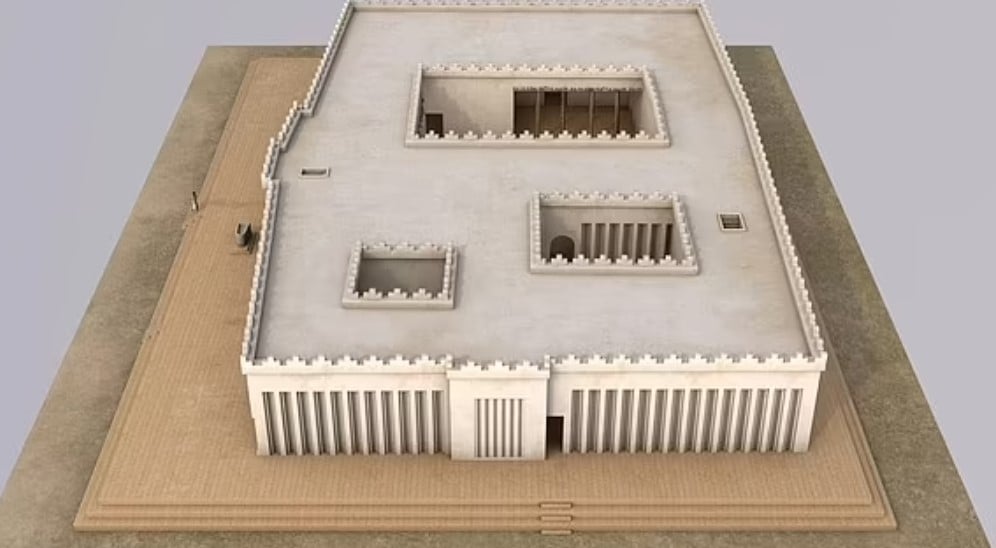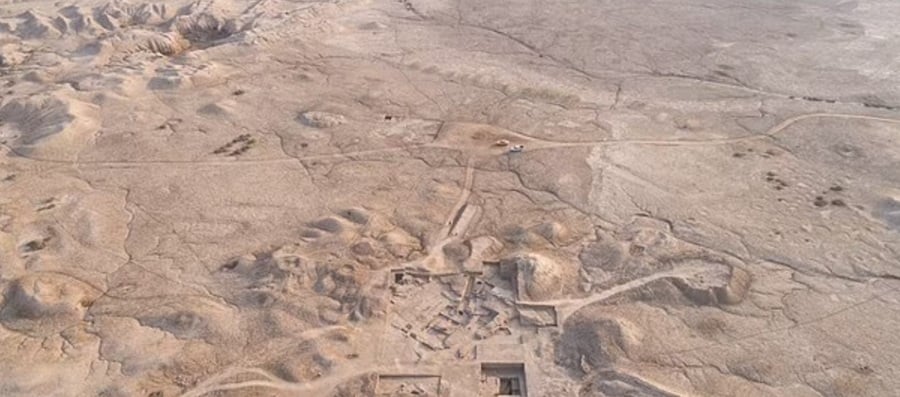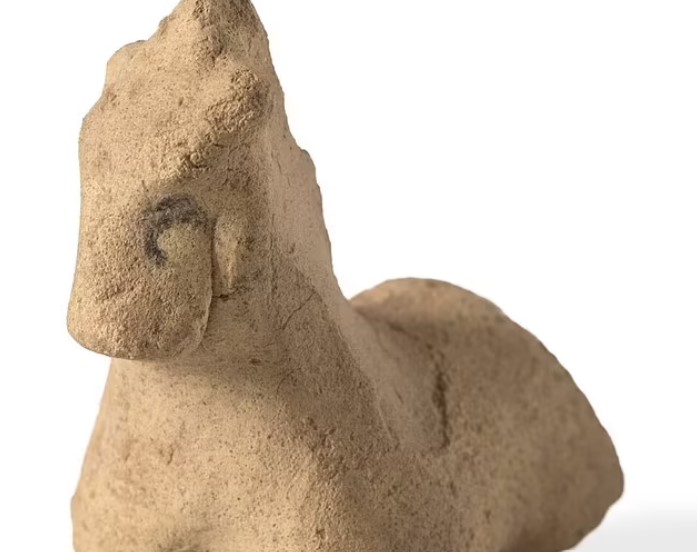
Archaeologists uncovered signs that Alexander the Great was worshipped as a divine figure in an ancient temple in Iraq.
Scientists had been puzzled by the discovery of more recent Greek inscriptions at the ancient Sumerian temple of Girsu, in the modern-day town of Tello.
Now, British Museum archaeologists believe a Greek temple to Alexander the Great was founded on the site, possibly by Alexander himself.
The discovery of a silver coin minted around 330 BCE by Alexander’s troops suggests that the conqueror may have visited the temple after defeating the Persians.
This would make founding the temple one of the last acts of Alexander’s life, shortly before his death at the age of 32.

After excavations began in the 19th century, it appeared that a 2,300-year-old Greek structure may have been built on the 4,000-year-old site but the only evidence was a mysterious tablet.
In both Greek and Aramaic the tablet read: ‘Adad-nadin-aḫḫe’ meaning ‘giver of the two brothers’.
What puzzled researchers was that the temple had been abandoned in 1750 BCE, more than 1,000 years before Alexander the Great had even been born.
The Greeks of Alexander the Great built temple on the Iraqi site
British Museum archaeologist Dr Sebastien Rey now believes that the Greeks had founded their own temple on the ancient site, potentially to declare the divinity of Alexander.
“It is truly mind-blowing. Our discoveries place the later temple in Alexander’s lifetime,” said Dr Rey.
“We found offerings, the kinds of offerings that would be given after a battle, figures of soldiers and cavalrymen.
“There is a chance, we will never know for certain, that he might have come here, when he returned to Babylon, just before he died,” Dr Rey told The Telegraph.
The discovery of the silver coin alongside an altar with offerings usually found in Greek temples implies the site was being used as a place of worship by Alexander’s forces.
The offerings included terracotta cavalrymen which were very similar to the ‘Companion Cavalry’ which formed the personal bodyguard of the young conqueror.

The researchers say this could mean that whoever made the offerings was very close to Alexander, or that these were possibly made by the conqueror himself.
Meaning of the Greek inscription
The discoveries also shed light on the meaning of the cryptic Greek inscription found at the site which referred to the ‘giver of the two brothers’.
Alexander the Great had an immense personal interest in the figure of Hercules and had declared himself the Son of Zeus while in Egypt, making him the brother of the mythical hero.
Alexander may have asked the local people who most resembled Hercules within their culture and been directed to the temple of Ningirsu the warrior God.
Dr Rey believes that the temple was dedicated to Zeus and the two brothers, a combined figure of Hercules and Ningursu, and Alexander the Great.
‘This site honours Zeus and two divine sons. The sons are Heracles and Alexander. That is what these discoveries suggest,’ says Dr Rey.
This theory also suggests that ancient cultures had a deep understanding of their history and a long cultural memory, knowing the exact location of the temple and its use over a millennium after it was abandoned.
The city of Girsu was part of Sumer, one of the world’s most ancient civilizations that built the first cities and created the first codes of law.
While the site of the city had been badly damaged by 20th-century conflict and destructive excavations by French archaeologists in the 19th-century, remote sensing technology suggested a larger, hidden complex.
In the Autumn of 2022, a team of researchers found walls and administrative records of a huge palace and the sanctuary where the Greek temple was later constructed.
See all the latest news from Greece and the world at Greekreporter.com. Contact our newsroom to report an update or send your story, photos and videos. Follow GR on Google News and subscribe here to our daily email!



